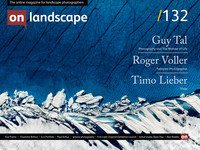An Exhibition & Series of Photographs of the Melting Arctic Polar Ice Cap

Timo Lieber
Timo Lieber is a London-based aerial and landscape photographer. Timo’s work has been exhibited in the UK and in Continental Europe and his images are held in both corporate and private collections. Timo is originally from Germany and now lives in London with his wife and son.

Michéla Griffith
In 2012 I paused by my local river and everything changed. I’ve moved away from what many expect photographs to be: my images deconstruct the literal and reimagine the subjective, reflecting the curiosity that water has inspired in my practice. Water has been my conduit: it has sharpened my vision, given me permission to experiment and continues to introduce me to new ways of seeing.
We interviewed Timo for our Featured Photographer spot back in May 2014. At the time he mentioned experiencing a special moment shooting glacial streams out of a Cessna, and since then interpreting the world from above has become a major part of his portfolio.
He’s currently in the final stages of preparing a new exhibition of images of the melting polar ice cap which opens in London next week. THAW shows the rapidly growing number of blue lakes and rivers that form on the Greenland ice cap in eye-popping detail. Eleven images will be exhibited as large-scale prints at Bonhams’ showroom from Monday 20 February to Thursday 23 February – full details are at the end of this article.
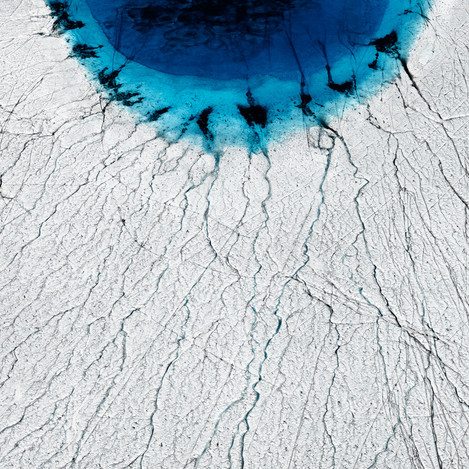
The project was inspired by Timo’s travels to the Arctic and observations of the changes taking place. It was made possible by the assistance of Professor Alun Hubbard, Aberystwyth University, and Professor Julian Dowdeswell and Dr Poul Christoffersen of the Scott Polar Research Institute, University of Cambridge.
The lakes and rivers photographed are in the Greenland ice sheet, which covers 1.7 million square kilometres. The extent of surface melt has grown rapidly over the past decade, but the effects also extend down to the bedrock, exacerbating the problem. The annual loss from the ice sheet is three times greater than that in Antarctica.
The images were taken in summer 2016, when Timo visited the research team on the ice cap in Greenland, photographing melt lakes both from small planes and helicopters. We asked Timo to tell us a little more about his experience of creating this body of work.
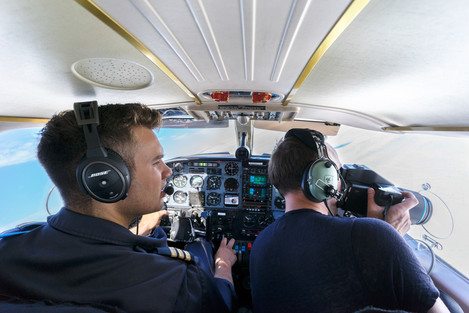
MG: Would you like to fill in the gap a little for readers by telling us how your photography has evolved since Tim interviewed you for our FP spot in May 2014?
TL: It has been an exciting journey. These days, I almost solely shoot from the air, and in fact, I haven’t used a tripod in ages. It happened on one of those many trips to Iceland a few years ago that I tried my hand at shooting aerials for the first time. I’d been toying with the idea of doing so for some time, but I’d never got beyond researching the logistics back at base in England. However on that particular occasion, driving past one of the gravel runways dotted around Skaftafell on the south coast of the island, I saw a tiny single-engine plane and immediately turned my 4 x 4 around. I was lucky, as the pilot, who was having a slow day on the tourist front, agreed to fly me up straight away. Before we even touched down again, I had already started plotting my next flight!
I also started shooting with a 100-megapixel Phase One camera. Shooting with that bit of kit has been a revelation. 100 megapixels is a mind-blowing number, and the resolution is just sensational. You really see it when printing big – which is something I very much enjoy.
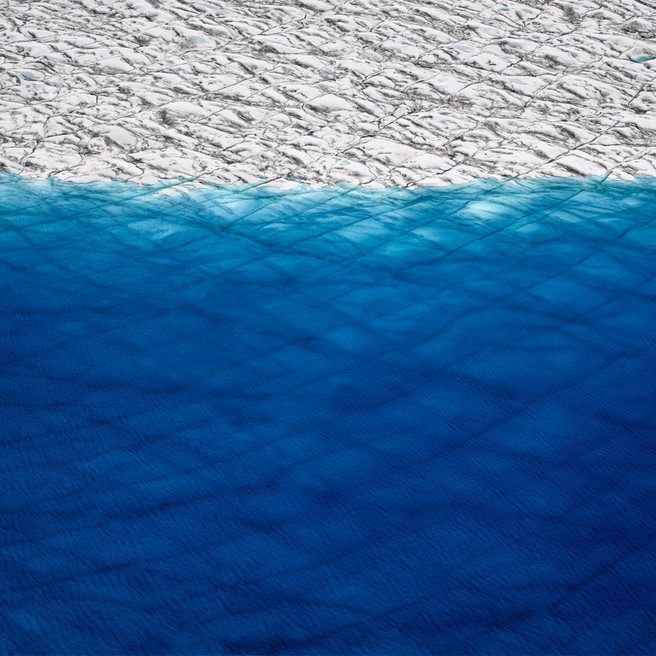
Most importantly – I now tend to work in series – some of which take a lot of time to put together. My latest body of work, THAW, was two years in the planning. I am particularly drawn to man’s impact on the landscape, which is a subject matter I would like to explore further in the future.
MG: What prompted you to create the body of work that has become THAW?
TL: Having travelled to the Arctic numerous times and seen the rate of change there, I’ve long wanted to capture the impact of Arctic warming and translate it into beautiful photographs. The Greenland ice sheet has been losing mass rapidly over the past few years and is a major contributor to global sea-level rise – undoubtedly escalated by man’s contribution to global warming. And I really wanted to make the world more aware of what’s going on.
To make the story of THAW more than just a photography series, I teamed up with leading glaciologists, including the Scott Polar Research Institute in Cambridge. While I capture the moment, the scientists provide the background and points of comparison.
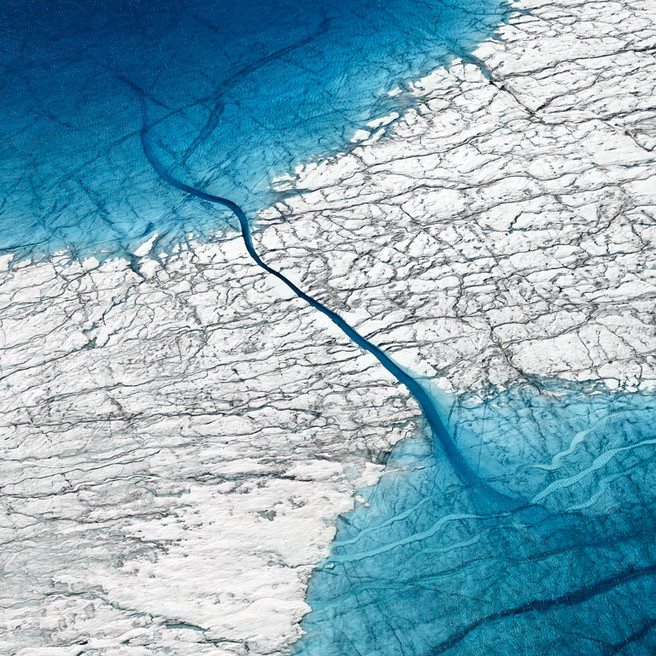
MG: You had help from the Scott Polar Research Institute in researching your shoot locations, but what was your reaction when you first saw the extent of the summer thaw for yourself?
TL: The extent of the melt in Greenland is scary. Everywhere you look you see a landscape that is filled with patches of blue. I had studied several satellite maps that the scientists provided in order to find out where the melt lakes were. But the second I arrived in Greenland I could have thrown them all away as there are so many lakes on the ice cap that you can see them all over the place – no maps required at all.
I shot the images in July 2016 and, of course, one expects some melt lakes to form on the ice sheet, but they are increasing in size and number. That’s the problem, and this is where the scientists come in. In the past two decades alone, the Greenland ice sheet has shifted from a steady state in balance with its climate, to one in which it is now losing an estimated 380,000,000,000 tonnes of ice annually. That’s a 12 digit figure, and the rate is accelerating. It’s hard to argue with the facts.
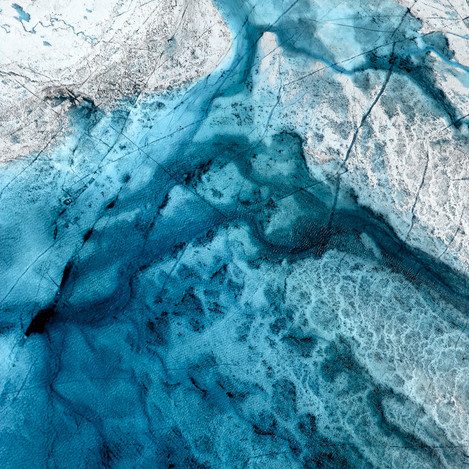
MG: What challenges did you face in the process of making the images?
TL: You have the obvious challenges of working in a rather remote and cold part of the world where the weather changes all the time. And it doesn’t help that I hate shooting with gloves on when flying with doors open above the ice cap… Funnily enough, what I found is that my camera gear was incredibly reliable on the ice. When I still used to shoot from the ground at minus 30 Celsius, very often my cable releases would break or my lenses would freeze over from the tiniest bit of moisture in the air. Nothing like this happened with my camera this time round.
MG: You chose to show the seasonal melt in the abstract – were you worried about beautifying something so terrible?
TL: Climate change and its effect on the Greenland ice sheet has been my main focus in creating THAW. To offset the serious message I wanted the photographs to be abstract and beautiful. I envisaged the series not as a photojournalistic project – that is best left to BBC and National Geographic documentaries – but as work that shows a dangerous phenomenon that is nevertheless stunning.
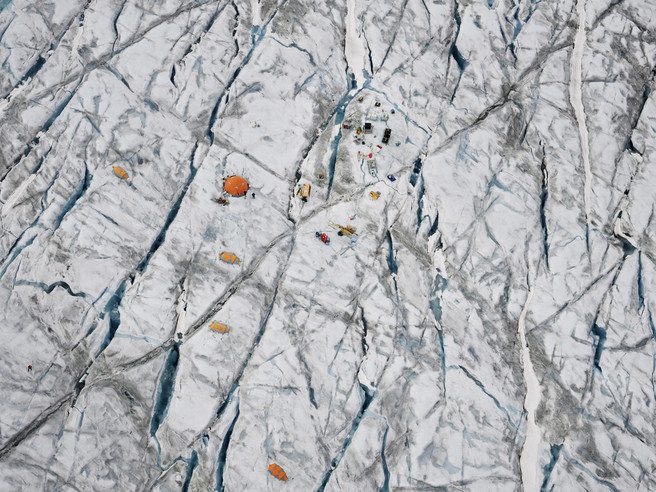
MG: The scale of the exhibition pieces is impressive. What reaction do you hope for from viewers?
TL: Yes, some of the exhibition pieces measure almost two meters by two metres. I really want to invite the viewer to step closer to the images and ask the question: what’s behind all of this beauty? The answer can vary from one person to the next; it is global warming…
We have all heard about climate change, but every so often we choose to ignore what may feel like a rather remote problem. Having spent a lot of time with the scientists over the past few months, it really hit me that the Arctic warming is something we can no longer ignore. I felt I needed to do something, if not for my own but for my son’s future. And if more of us start thinking the same, including what we can do to prevent a further melting of the Arctic, then maybe this is a good start.
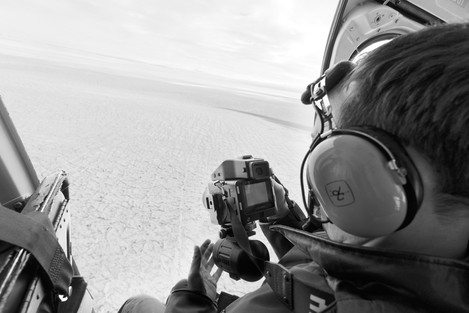
MG: Many of your works feature man’s activities on earth – from mineral extraction to lighting, to leisure. Do you find that you are increasingly interested in drawing attention to man’s interaction with the environment?
TL: Absolutely yes – this is where I am heading with my photography. It is the one area where I hope photography can make a real difference. I also think that combining photography and science is incredibly powerful. As an aerial photographer, I can only ever document the status quo whereas a scientist can provide a longer-term perspective – both in terms of what happened historically and what may happen in the future.
MG: Do you have plans to exhibit the work further?
TL: Yes I do. It is very likely the exhibition will travel to Germany this year, and I am working on further locations.
MG: What’s next for you?
TL: I have several ideas of what to photograph next and the list of places I want to visit only seems to grow. I am still in close touch with the scientists who helped me on THAW, and I’d love to go back to Greenland to continue my work there. I am also researching another environmental topic at the moment that I recently stumbled upon. There is a lot more digging to do, and it’s a logistical nightmare to put the project together, but I am working on it.
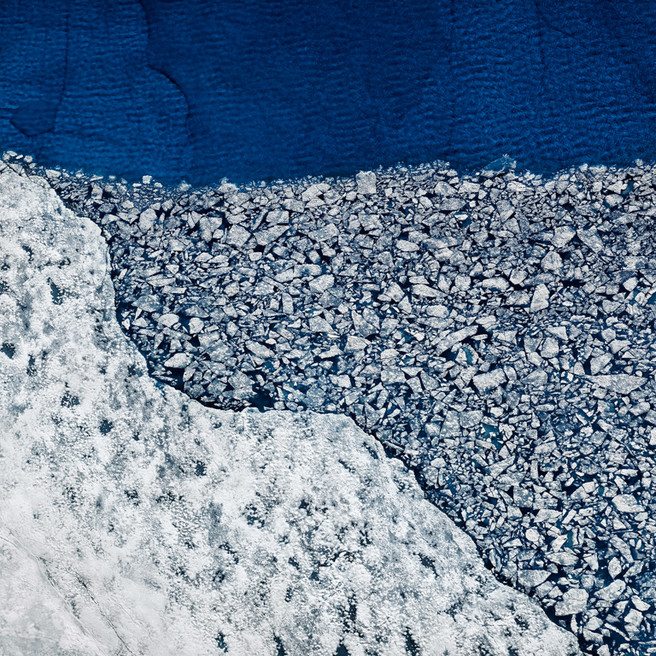
Thanks Timo. THAW will be in the main showroom at Bonhams, 101 New Bond Street, London, W1S 1SR from Monday 20 - Thursday 23 February 2017. The exhibition is open daily from 10am - 5.30pm and Timo expects to be there most of the time.
Timo hopes to raise awareness of the environmental challenges facing the Arctic, and a proportion of proceeds from print sales is to be donated to the Scott Polar Research Institute to support their work monitoring the changes to the Arctic ice cap.
At a time when the beauty of the far north acts as a magnet for photographers, among others, we should perhaps ask ourselves at what cost our appetite for travel to and within these fragile lands. THAW is a reminder of both our responsibility to safeguard our environment and to consider the part that we all play in contributing to change on a daily basis.
You can see more of Timo’s aerial photography at http://www.timolieber.com/ and instram accounts at @timolieber and @thaw2017

